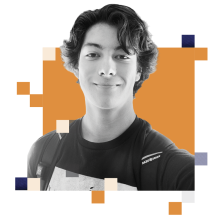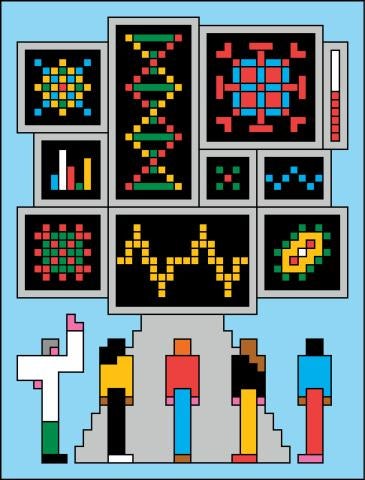
With AI, we can … Connect humanities and technology to create something new
Computer scientists studying ethics. Musicians working with neural networks. Philosophers debating the social impact of artificial intelligence. That’s the kind of melding of disciplines students imagined when they began shaping Case Western Reserve University’s new Humanity and Technology (HAT) major with faculty and administrators.
Created with support from the Jack, Joseph and Morton Mandel Foundation, the major draws on longtime university strengths—and CWRU’s interdisciplinary drive to meld them for a stronger education. Students take courses in humanities and STEM (science, technology, engineering and mathematics), connecting them in core courses on ethics and technology—and then finish with an integrated capstone project.
Meet some third-year students—all Jack, Joseph and Morton Mandel Fellows in Experimental Humanities—who are as interdisciplinary as the major they helped create.

Aidan Bugayong
Bugayong is studying computer science, data science and philosophy and has designed software using AI tools.
How does interdisciplinary thinking change tech design?
When you study one field, you build up from the basics. But interdisciplinary work flips that—you start with a complex issue and work backward. Tech benefits from thinking about human impact from the beginning.
Why did you want to be part of shaping the HAT major?
The creation of new majors is necessary. This one stands out because it goes beyond just pairing two fields—it’s designed to help students understand how disciplines intersect. I care a lot about that overlap and wanted to make sure the major gave students depth and the freedom to explore.

Shreya Girish
Girish studies music and biology and has explored how the rhythmic structure of Western classical music affects respiration.
You taught a machine-learning model to predict the next notes in a musical composition and compared the results to human predictions. Why?
I’m really fascinated by how the brain makes art and music happen. So much relies on our prior experiences and the situational context. No matter how much data I gave the computer, its predictions weren’t as accurate. Understanding the human cognitive process is crucial to creating better computer models.
How did helping design this major connect with your own journey?
I came to Case Western Reserve University because I was drawn to the intersection of science and music. Being part of something this new and flexible, I can bring my interests together and see how far they can go.

Michael Rinderle
Rinderle spent five years as a professional ballet dancer before coming to CWRU. His studies focus on neuroscience and philosophy, and he works in the campus Human Fusions Institute, which creates devices to advance the human-tech relationship.
What led you from ballet to brain science?
Dance is a wonderful, expansive experience—mastering movements, dancing with others and connecting to audiences. The transformative power of movement that I saw both on stage and while helping with dance-therapy programs led to an insatiable curiosity about how the body shapes the mind.
What was it like to help create a new major?
It was incredibly exciting—and meaningful. We were building more than a curriculum; we were creating an opportunity to explore big questions across disciplines. Balancing a wide range of interests with academic depth took real collaboration. But knowing our ideas might influence the path of students for years to come—that made the challenge worth it.
Illustrations by Mathieu Lacrecque
Experimental Humanities





